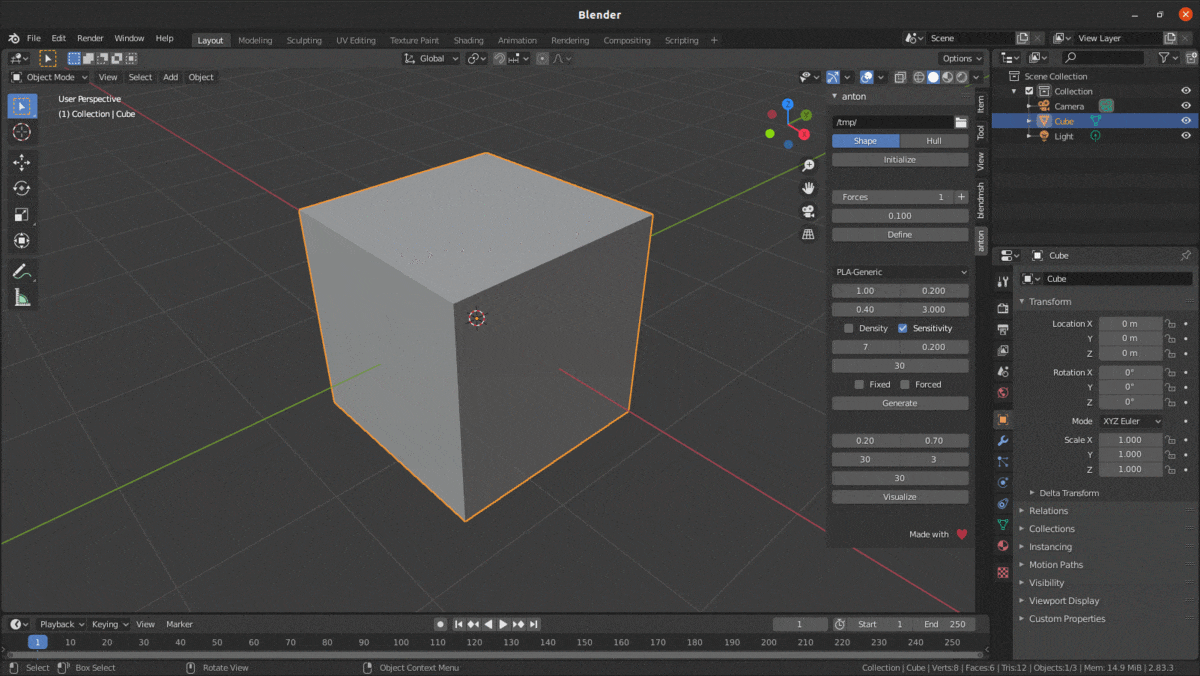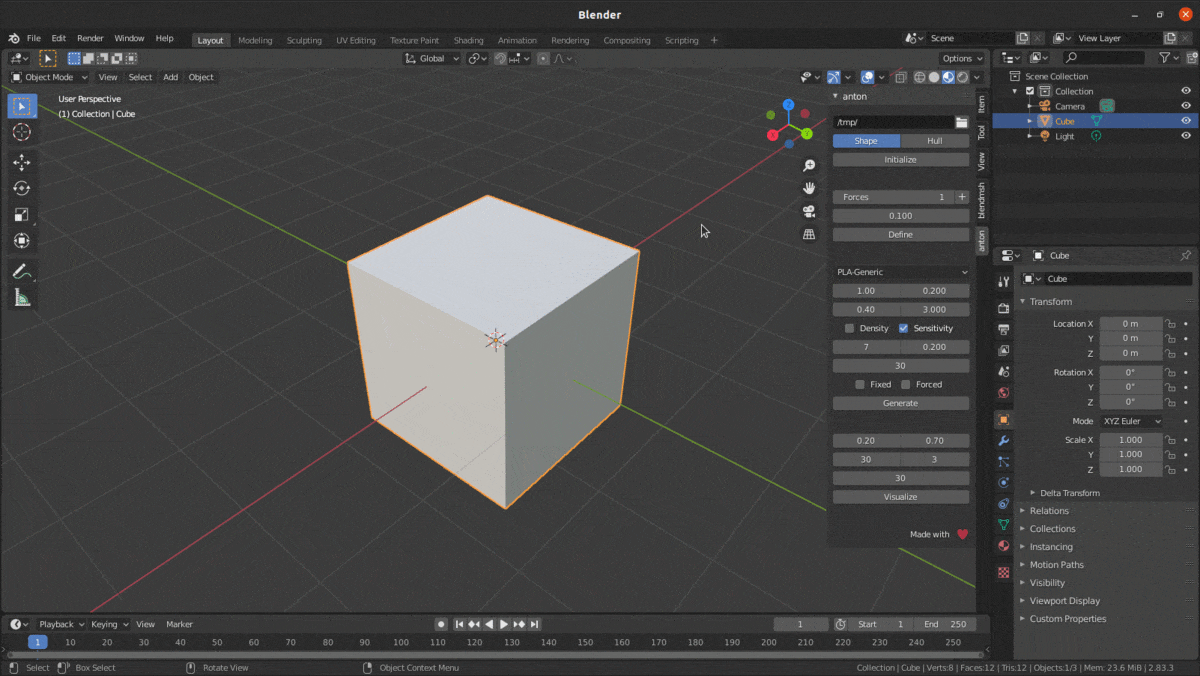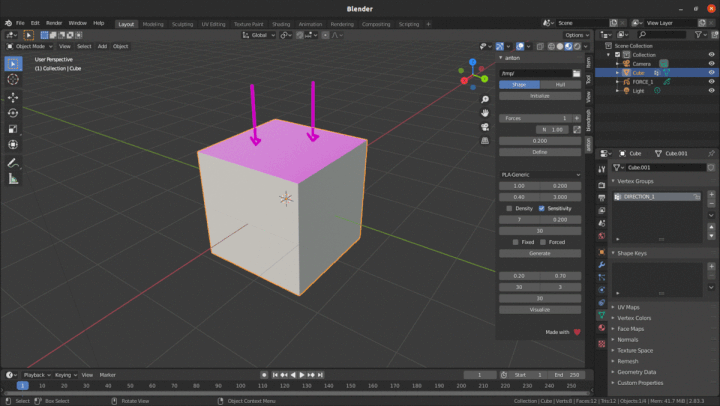Quickstart¶
Initialize¶

- Design space can be initialized via two modes.
SHAPEdefines existing geometry (can be imported as well) as design space.HULLforms a convexhull excluding existing objects.- Design space is then saved as a
.stlfile under the specifiedworkspace_path

Define¶

- Specify the
number of forcesacting on the object. - Assign
materialsto face(s) corresponding to each force, fixed and non-design space. - Assign
vertex groupsto edges that depict the direction of each corresponding force. - Input the
magnitudeand click theExpandbutton to visualize and change direction of each applied force. - Specify the
maximum element sizefor tetrahedral finite element mesh generation and clickDefine

Generate¶

- Select a
materialfor the object. - Specify optimization parameters:
EminDensity changeVolumina ratioPenalty exponent
- Specify filter parameters:
Number of neighboursNeighbourhood radius
- Read more about these parameters here.
- For a conceptual understanding of these parameters, read Material interpolation schemes in topology optimization.
- Input the
number of iterationsand clickGenerate
Visualize¶

- Specify
radiusandsensitivityof the metaballs. - Input the
number of keyframesandinstantiation pointsfor animation. - Mention which iteration to visualize and click
Visualize. - The generated metaball object can then be converted into a mesh via
Object->Covert to->Mesh from Curve/Meta/Surf/Text - A
Smooth Correctivemodifier can then be applied on the mesh during export.
